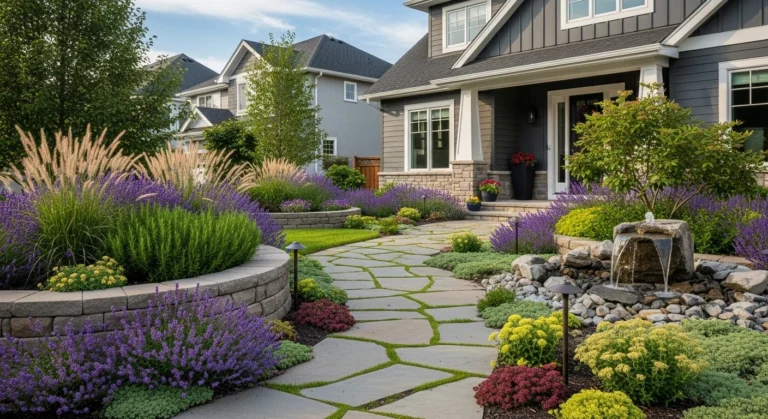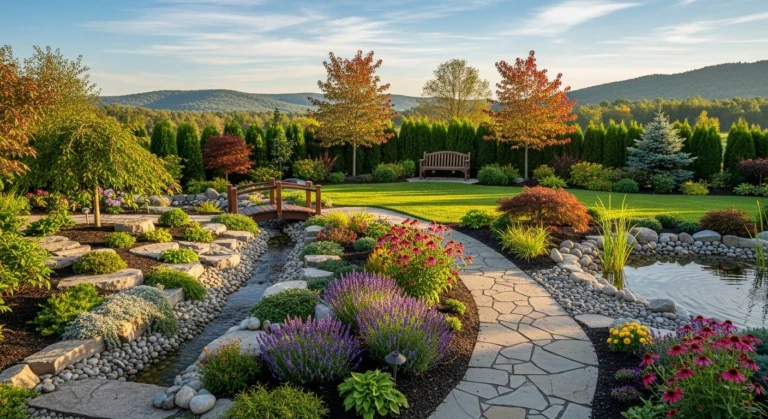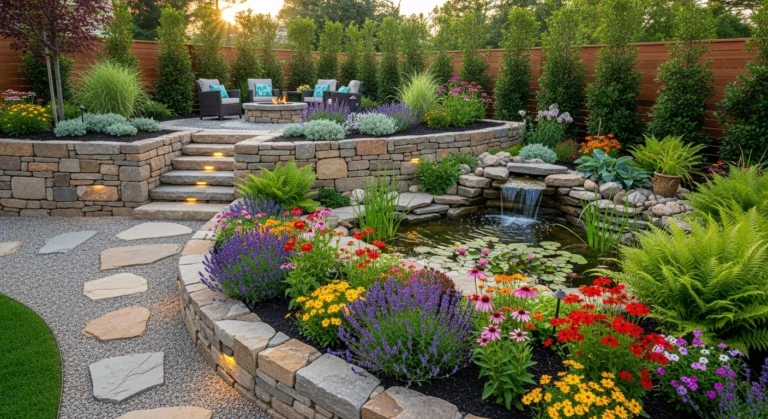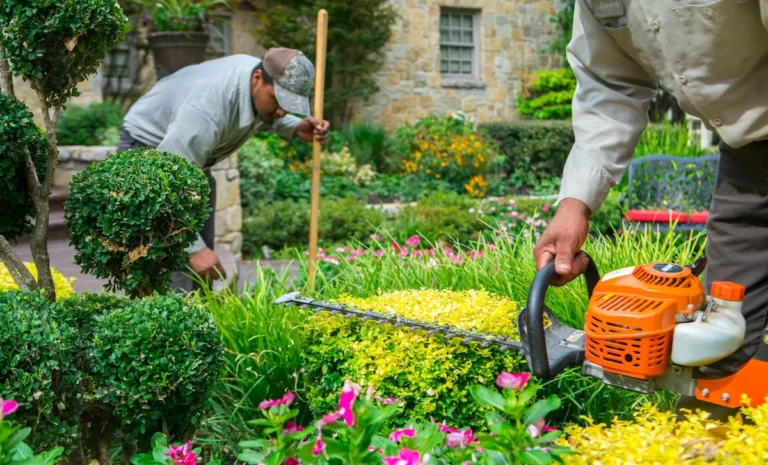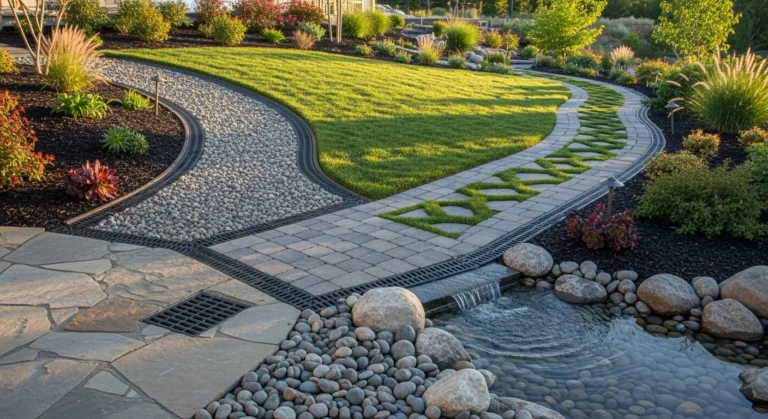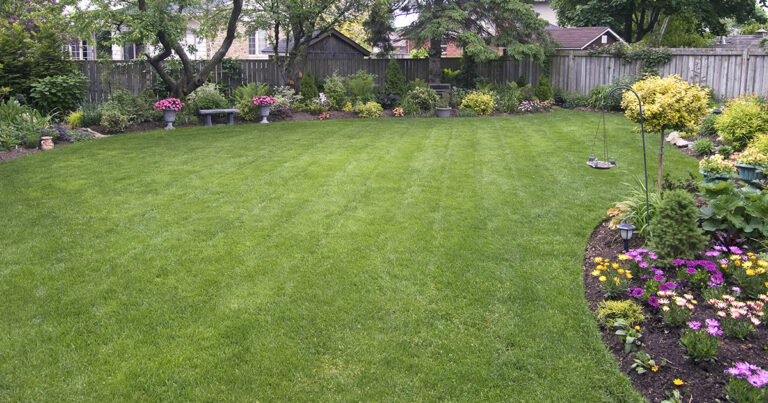Beat Texas Heat: Proven Strategies for Summer Landscaping
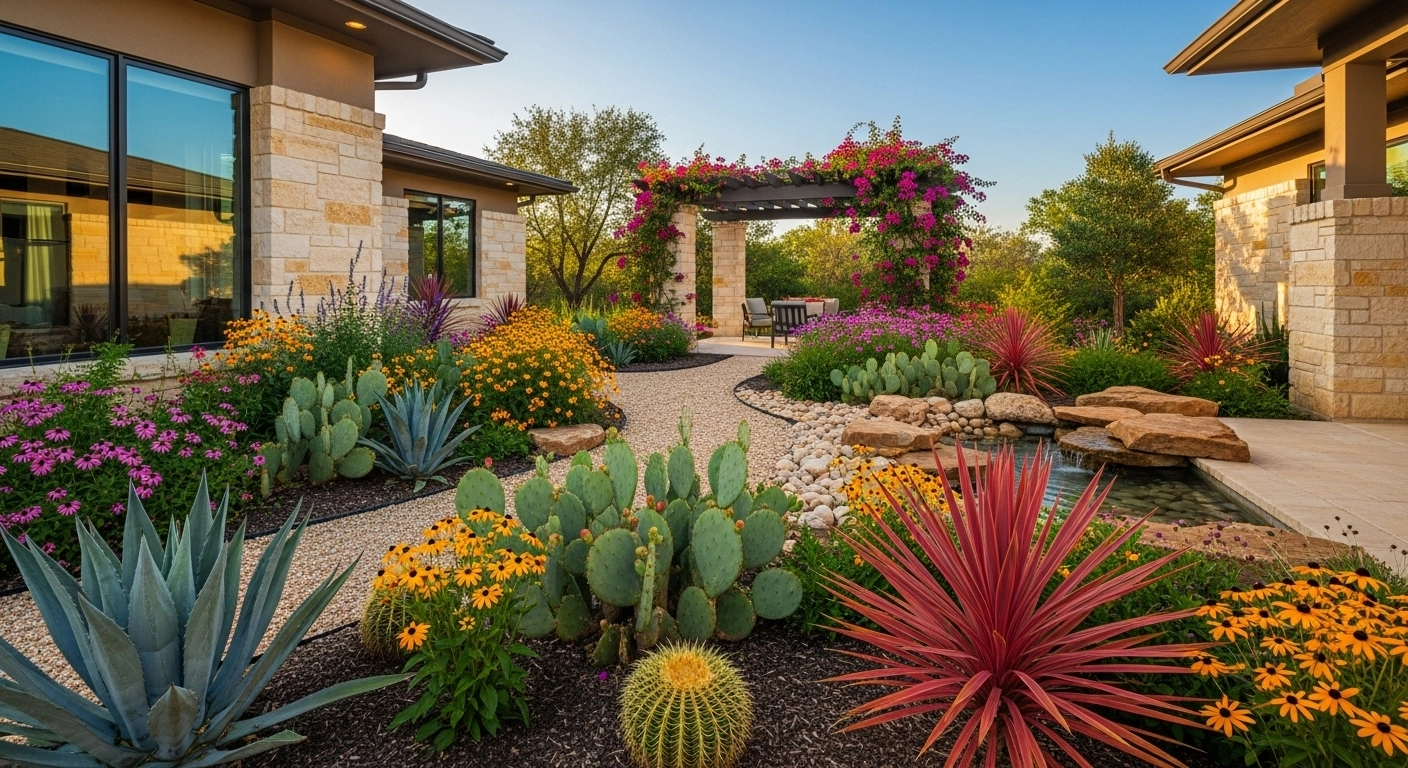
Another scorching summer day in Central Texas, and you’re standing at your window watching your carefully tended landscape slowly surrender to the relentless heat – brown patches spreading across your lawn like wildfire, flowers drooping despite yesterday’s watering, and that familiar dread settling in as you calculate what this month’s water bill might look like. If this scene feels painfully familiar, you’re not alone in this struggle. Thousands of Waco homeowners face this same heartbreaking cycle every summer, watching months of hard work and investment literally wilt away despite their best efforts. The combination of 100+ degree temperatures, sporadic rainfall, and Central Texas clay soil creates a perfect storm that can transform even the most beautiful spring garden into a summer survival zone. After helping families across our region navigate these brutal conditions for over 15 years, I can tell you that the frustration of losing your outdoor oasis to heat stress never gets easier to watch.
Here’s the truth I’ve discovered through countless Central Texas summers – successful summer landscapes aren’t about spending more money or working harder, they’re about working smarter. The yards that stay green and gorgeous through August heat waves aren’t the ones getting watered three times daily or constantly replanted with expensive varieties; they’re the ones designed and managed with our unique climate in mind from day one. Our Lawn Care Waco methodology focuses on building summer resilience before the thermometer hits triple digits, creating landscapes that actually become more beautiful under stress rather than falling apart. When you understand how to work with Central Texas conditions instead of against them, summer becomes your landscape’s time to shine rather than merely survive. The difference between struggling through summer and mastering it comes down to strategic planning, smart plant choices, and timing that respects what our climate demands.
Understanding Central Texas Summer Challenges
Our summer conditions here push plants beyond normal stress levels – we’re dealing with extreme heat, humidity swings, unpredictable rainfall, and soil types that either hold too much water or drain too quickly. The Brazos River valley climate creates unique microconditions that make generic gardening advice not just ineffective, but potentially harmful. Most landscape guidance assumes temperate conditions with regular rainfall and moderate temperatures that simply don’t exist here from June through September.
The financial impact of poor summer management adds up quickly. Over the past decade, we’ve documented that homeowners who don’t adapt their approach to Central Texas summers spend approximately 75% more on plant replacement, emergency irrigation, and landscape repairs than those who implement heat-adapted strategies from the start. This isn’t just about money – it’s about the time, effort, and emotional investment that gets lost when landscapes fail during our most challenging season.
Our Seasonal Landscape management programs consistently demonstrate that climate-adapted landscapes require 50% less summer intervention while maintaining superior appearance and plant health compared to traditionally managed properties. The secret lies in understanding that Central Texas summers aren’t an obstacle to overcome – they’re a design parameter to embrace.
Building Heat Resilience Into Your Landscape
Smart Watering Strategies That Actually Save Money
Throw out everything you think you know about summer watering – the “water more often” approach that works in other climates can actually harm plants in our conditions. The most expensive mistake I see homeowners make is increasing watering frequency without considering timing, depth, or efficiency. Frequent shallow watering creates surface-dependent root systems that become even more vulnerable to heat stress and drought.
Deep, strategic watering builds the underground foundation that carries plants through our worst weather. The optimal window is 4-6 AM when temperatures are lowest and wind speeds are minimal, allowing maximum soil penetration before the day’s heat triggers massive evaporation. Apply water slowly enough to soak in completely – this often means running sprinklers in shorter cycles with breaks between to prevent runoff on clay soils.
Your summer irrigation game plan:
- Install drip systems for shrubs and perennials – they deliver water directly to root zones with minimal evaporation loss
- Use the “6-inch rule” – water should penetrate at least 6 inches deep; test with a long screwdriver or soil probe
- Zone your watering by plant needs – don’t waste water on drought-adapted natives while under-serving thirsty annuals
- Apply 3-4 inches of organic mulch around all plantings to reduce evaporation and moderate soil temperatures
Proper irrigation timing can cut water usage by 35% while actually improving plant health. The goal isn’t more water – it’s smarter water application that works with our climate instead of fighting it.
Heat-Tolerant Plant Selection and Management
Plant selection makes or breaks summer landscape success in Central Texas, and trying to grow heat-sensitive varieties here is an expensive lesson in futility. The plants that excel in our climate have evolved specific adaptations for dealing with extreme temperatures, variable rainfall, and challenging soil conditions. Understanding and working with these natural adaptations transforms summer care from constant emergency management to routine maintenance.
Native and heat-adapted species are your foundation for reducing summer stress and maintenance demands. Texas red oak, flame leaf sumac, turk’s cap, and prairie sage don’t just tolerate our conditions – they actually thrive under the stress that kills less adapted plants. These varieties developed sophisticated strategies like extensive root systems, reflective leaf surfaces, and efficient water storage that make them naturally summer-resilient.
For existing tender plants, strategic protection determines survival rates. Provide filtered afternoon shade during peak heat periods (shade cloth or temporary screens work well), maintain consistent soil moisture without waterlogging, and avoid any fertilization during extreme stress periods. Plants dealing with heat stress can’t effectively process additional nutrients and may actually be damaged by fertilizer applications during July and August.
Never attempt major plantings during summer heat unless absolutely unavoidable. If you missed the Spring Yard preparation season, patience until fall planting season will save both money and heartache. Summer-installed plants face maximum stress with minimum recovery time, resulting in poor establishment and high mortality rates.
Lawn Management Through Extreme Conditions
Your turf represents the biggest summer challenge for most Central Texas homeowners, particularly those maintaining cool-season grasses that weren’t designed for our climate extremes. The reality is that some grass varieties simply cannot survive Central Texas summers regardless of care intensity. Recognizing your grass type’s limitations prevents enormous frustration and wasted resources.
Bermuda grass and Zoysia grass offer your best options for sustainable summer performance with reasonable maintenance requirements. Both warm-season varieties actually prefer hot conditions and can maintain active growth through periods that would devastate cool-season alternatives. Bermuda, in particular, recovers quickly from drought stress and tolerates the heavy clay soils common throughout our region.
For existing cool-season lawns, survival mode becomes the realistic goal. Increase mowing height to 3.5-4 inches to shade grass crowns and reduce heat absorption. Water deeply but infrequently to encourage deep root development that can access moisture below the surface heat zone. Apply organic matter like compost to improve soil structure and water retention capacity.
Summer turf management essentials:
- Suspend fertilization during peak stress periods – heat-stressed grass cannot utilize nutrients effectively and may suffer burn damage
- Mow only during cool morning hours with sharp blades to minimize cutting stress and water loss through torn leaf edges
- Mulch grass clippings in place to provide natural ground cover and return nutrients to the soil system
- Limit foot traffic on stressed turf areas – create temporary pathways during extreme heat periods
August lawn perfection isn’t realistic in Central Texas – focus on maintaining enough plant health to enable strong recovery when fall temperatures moderate stress levels.
Mulching Strategies for Temperature Control
Exposed soil becomes a landscape killer during Central Texas summers, reaching surface temperatures that can exceed 150°F and create root-zone conditions where plant survival becomes impossible. Strategic mulching represents probably the most cost-effective intervention you can make to improve summer heat tolerance while reducing water requirements and maintenance needs.
Apply 3-4 inches of organic mulch materials around all landscape plants, maintaining 2-3 inches of clearance from plant crowns to prevent moisture and pest problems. Shredded hardwood, pine bark, and aged compost all perform well, but avoid light-colored rock or gravel mulches that can reflect heat upward onto plant foliage. Organic mulches provide the additional benefit of gradually improving soil structure as they decompose.
Mulching benefits extend far beyond moisture conservation. Quality mulch moderates soil temperature swings, suppresses competitive weeds, prevents soil compaction from heavy rainfall, and slowly releases nutrients as organic materials break down. We regularly measure soil temperatures under proper mulch coverage that remain 25-35 degrees cooler than adjacent bare soil areas.
Timing mulch installation correctly maximizes effectiveness – apply fresh organic mulch in late spring before peak heat stress begins. Waiting until plants show stress symptoms means missing the prevention window when mulch provides maximum benefit. Gradual mulch addition prevents shocking established plants with sudden environmental changes.
Recognizing Heat Stress and Emergency Response
Plants telegraph their stress levels through observable symptoms, and learning to read these signals enables intervention before damage becomes irreversible. Heat stress develops progressively, beginning with subtle changes that are easily overlooked and advancing to obvious damage that may require seasons to fully recover from.
Initial heat stress indicators include temporary midday wilting despite adequate soil moisture, browning leaf margins, premature flower and fruit drop, and significantly reduced growth rates. These early warnings represent your plants requesting help before reaching crisis levels. Prompt response with increased shade, more consistent watering, and temporary wind protection often prevents progression to serious damage.
Severe heat stress manifests as persistent wilting regardless of soil moisture, extensive leaf scorch and defoliation, branch dieback, and complete growth cessation. Plants reaching this stage require intensive intervention and may need multiple growing seasons to fully recover their health and appearance. Prevention through proactive management always proves more effective and economical than attempting recovery from severe stress damage.
Your heat stress emergency response protocol:
- Temporary shade structures using 40-60% shade cloth for vulnerable specimens during extreme heat events
- Wind protection with temporary barriers to reduce desiccating air movement around stressed plants
- Cool water applications applied slowly to avoid shocking already-stressed root systems
- Avoid any pruning or fertilization of stressed plants – energy must focus on survival rather than new growth
Seasonal Maintenance Timing for Optimal Results
Scheduling summer maintenance activities around temperature patterns and plant stress cycles maximizes effectiveness while minimizing additional stress on both plants and gardeners. Working during the most favorable hours isn’t just more comfortable – it actually produces better results because plants are more responsive to care when they’re not experiencing peak stress.
Early morning hours (4:30-7:30 AM) provide optimal conditions for watering, deadheading spent flowers, and conducting thorough landscape inspections. Plants have recovered from the previous day’s heat stress, air temperatures remain moderate, and you can identify developing problems before they escalate. Morning watering maximizes soil penetration while minimizing evaporation losses.
Evening work sessions (after 8 PM) focus on activities that don’t disturb plant root systems or add stress during recovery periods. Mulch application, light weeding, and planning future improvements work well during cooler evening hours. Avoid evening watering in humid conditions – overnight moisture on foliage can promote fungal disease development.
Midday activities should be strictly limited to genuine emergencies and quick problem assessment. If plants show severe wilting during peak heat despite adequate soil moisture, they may require immediate shade or wind protection. Never transplant, heavily prune, or apply fertilizers during the hottest portions of summer days.
Our Landscaping Services crews modify their schedules seasonally because experience has taught us that working with natural rhythms produces superior results with less effort than attempting to force activities during unfavorable conditions.
Storm Damage Prevention and Recovery
Central Texas summers bring more than sustained heat – we also face sudden thunderstorms, damaging hail, straight-line winds, and occasional flooding that can devastate vulnerable landscapes within minutes. Building weather resilience into summer maintenance routines protects landscape investments and minimizes recovery time following severe weather events.
Proactive storm preparation should be continuous, not reactive. Secure or temporarily remove shade structures and plant supports before predicted high winds. Ensure adequate drainage around buildings and in low-lying areas where water accumulation causes problems. Remove dead or weakly attached branches that could become dangerous projectiles during storms.
Post-storm response timing affects both safety and plant recovery. Immediately following severe weather, prioritize safety by removing hazardous debris and damaged branches from walkways and structures. Allow 24-48 hours before making detailed damage assessments, as some apparent injuries may actually represent temporary stress responses that plants can naturally overcome.
Hail damage requires specialized treatment approaches that differ significantly from heat or drought damage management. Minor hail damage often heals without intervention and shouldn’t be immediately pruned away. Severe damage that exposes inner bark or completely breaks branches requires prompt attention to prevent secondary disease and insect invasion. Avoid fertilizing hail-damaged plants – focus on basic supportive care and allow natural healing processes to function.
Avoiding Costly Summer Management Mistakes
Overwatering causes more summer plant deaths than drought stress, contrary to most homeowner assumptions. The natural response to seeing stressed plants is increasing water applications, but this often creates waterlogged soil conditions that prevent root oxygen uptake, promote rot development, and establish ideal conditions for fungal diseases. Learning to distinguish between drought stress and overwatering symptoms prevents both plant loss and wasted resources.
Summer fertilization of stressed plants represents another expensive mistake that can actually increase plant damage. Plants focused on heat survival cannot effectively process excess nutrients, and fertilizer applications during peak stress often cause root burn and promote weak growth that becomes even more heat-sensitive. Reserve feeding programs for spring and fall periods when plants can actually benefit from additional nutrition.
Improper pruning timing adds unnecessary stress and removes protective foliage that plants need for heat protection. Major pruning should occur during plant dormancy periods, not when they’re already struggling with environmental extremes. Limit summer pruning to removing only dead, damaged, or hazardous material, and perform even this minimal work during cooler morning or evening periods.
Attempting to maintain unrealistic aesthetic standards during extreme weather sets up both frustration and failure. Your landscape may not achieve peak appearance during August heat waves, and that’s completely normal for Central Texas conditions. Focus maintenance efforts on plant survival and health rather than cosmetic perfection during peak stress periods.
Finally, ignoring the unique microclimates within your property leads to inefficient blanket treatments that waste time and resources. Conditions next to your southwest-facing wall differ dramatically from the environment under mature tree canopies. Observe and respond to specific microclimatic conditions rather than applying uniform treatments across your entire landscape.

